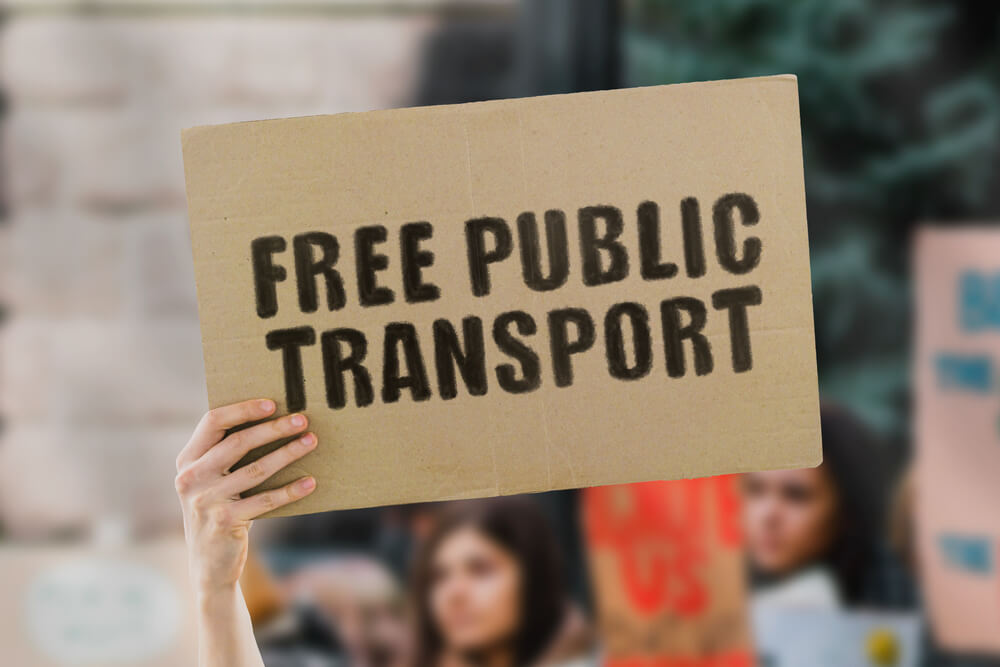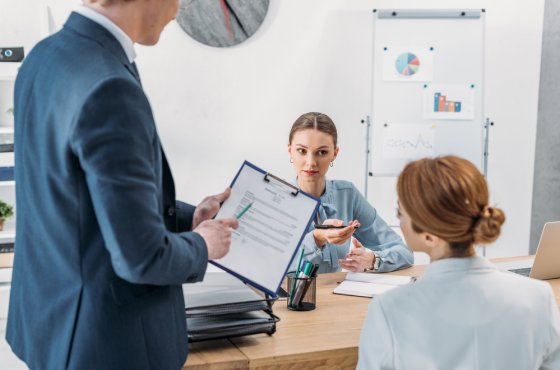Americans spend more than 15% of the budget on transport: in which cities it will soon be free
According to the United States Census Bureau, the average American spends 25,9 minutes a day traveling to work one way, which is just over four hours every week spent traveling to work. Writes about it CNBC.

Photo: Shutterstock
According to the Bureau of Labor Statistics, Americans spend about 15,9% of their budget on transportation costs, and couples with children spend about 17,1%. And as more Americans migrate to larger cities, public transportation use is on the rise. Since 1997, passenger traffic on public transport has increased by 21%.
These are just some of the reasons why lawyers across the country are starting to call for free public transport.
According to the New York Times, 100 cities around the world offer free public transport, many of them in Europe. But recently, cities across the United States have also begun to consider this option.
The pilot program attracted more than 60 thousand new passengers
In the city of Olympia (Washington) introduced a free bus, which previously cost $ 1,25 for a typical trip for adults and $ 3 for an express bus from Lakewood to Tacoma.
The Zero-Fare Project, which included two and a half years of strategic planning, entered into force on January 1, 2020 and will last for the next five years, after which the city will re-evaluate the impact of the project.
Clark Gilman, a member of the Olympia city council and a member of the local transit board, says the campaign’s slogan was to be “bold and fearless.” After a measure was taken to vote on the approval of an additional sales tax on public transport, the transition to free tariffs was actually the most cost-effective option for Olympia for several reasons.
On the subject: How to save in New York on transport and entertainment
Firstly, the box office, which collected the fare on Olympia city buses, is no longer needed.
In addition, the cost of plastic tariff cards that are already in use has grown due to trade tariffs introduced by the administration of US President Donald Trump.
Although support for high-tech cashless systems using a mobile application was publicly available, their implementation was considered too expensive, says Gilman.
“We were looking at options for collecting tolls that would cost more to collect and process than the fare amount,” he adds. — Fares in many transit systems are less than 10% of revenue. And we were no exception."
Revenues from public transportation usually come from a combination of tariffs and federal, regional and local financial assistance. Many cities, such as Olympia, have local sales taxes or property taxes for financing transport projects.
Therefore, Gilman and his colleagues looked at the example of Corvallis (Oregon), where the Oregon State University is located, which recently introduced a free public transport system. According to Gilman, this led to an increase in the number of passengers by two-thirds.
“So that gave us confidence,” he says.
After just one month of the program in Olympia, the number of passengers increased by 20% compared to the previous year, which is equivalent to more than 60 people.
“We are very pleased with the increase in passenger numbers. It's almost as if we have a whole new transit system that just launched,” Gilman comments. “Even though most people had money in their pocket and were able to ride the bus before, there are a lot of new people who haven't ridden in a long time.”
The first major US city begins to operate
In December 2019, Kansas City (Missouri), became the first major US city in which, after a unanimous vote in the city council, a universal, system-wide, free tariff scheme was introduced. Traveling by bus previously cost travelers $ 1,50 per trip or $ 50 for a monthly pass.
The move was a top priority for newly elected Kansas City Mayor Quinton Lucas, who relied on a combination of state and private funds to make his "Far-Free Transit" program a reality. In a recent speech, he detailed that the Kansas City Transportation Authority contributed nearly $5 million and Blue Cross and Blue Shield of Kansas City contributed nearly $1 million.
“Free public transportation would allow Kansas citizens to access employment and educational opportunities, resulting in an improved quality of life for our community,” he said.
“A way to solve all our deepest problems”
In recent years, many major cities have introduced zero-fare public transport, including Los Angeles, Salt Lake City, Denver, and Boston.
The person who wants to make public transportation free in Boston is City Councilwoman Michelle Wu.
“In Boston, public transit can be a way to solve all of our deepest problems: climate change, closing gaps in income inequality, and addressing racial inequality, heavy traffic and congestion,” Wu explains. “But we see that without a functioning system that is reliable and accessible to everyone, transportation is actually a barrier to all of those opportunities.”
In early 2019, Wu wrote an article in the Boston Globe, in which she opposed the proposed increase in public transport tariffs in Boston by 6,3%.
Such work has strengthened its position as one of the most high-profile and outstanding leaders in the struggle for free public transport.
On the subject: 16 cities in the world with the most expensive public transport
Wu’s first goal is to make the bus system free, “because bus lines tend to serve the least-connected communities and have historically been marginalized.”
She says the first question she usually faces when talking about free public transport is the cost. “It actually costs more than most people think to get a fare, and so you save a lot of operating costs by going to a free bus system. And you also speed up boarding times in a way that leads to even greater savings on average across the system,” explains Wu.
Approximately 60% of the Massachusetts Transportation Bureau's (MBTA) operating income comes from state and local funding. During fiscal 2019, MBTA received approximately $ 1,032 billion in sales tax, and 175 cities and towns in the MBTA service area contributed about $ 170 million to local taxes. Additional revenue of $ 78,5 million is generated from funds not related to fare, such as advertising.
The second problem that Wu usually hears is that canceling fares will lead to crowded trains and buses.
“That would be a great problem because our streets are so congested right now,” she says. Boston's rush hour congestion is the worst in the country, and the more people leave their cars at home and take public transit, the better off everyone will be."
Is it possible to make travel free for large cities
Perhaps the biggest question facing the free public transport movement is whether it can be done in the country's largest cities, such as New York.
“This is too big a program. It's too big a system,” says Suraj Patel, a lawyer and former Barack Obama White House staffer who is currently running for New York's 12th Congressional District. “Unfortunately, it needs to be paid for, it needs to be expanded and modernized, and so it seems unrealistic to move to free travel in a place like New York.”
Patel says New York should instead work to expand the existing Fair Rate Program, which offers low-income New Yorkers a cheaper rate than usual. To qualify, an individual must earn less than $12 per year, a family of two less than $760, a family of three less than $17, and a family of four less than $240.
But at the same time, the conflict over the use of tariffs continues to intensify.
In recent months, thousands of protesters took to the streets of New York because of a plan proposed by New York Governor Andrew Cuomo, worth $ 249 million, which is to increase the police presence in the New York subway by 20% over the next four years .
The governor’s plan adds 500 additional police officers to the metro system, partly to stem the evasion of fare that, according to government officials, results in a loss of $ 243 million a year.
On the subject: How much time do residents of large cities spend in transport?
Both Patel and Wu condemned this decision and described it as “the criminalization of poverty.”
Following an increase in police presence, several cases were recorded where cops aggressively behaved with blacks and Hispanics for low-level offenses, including, but not limited to, subway fare evasion.
In one case, captured on video, about a dozen police officers kept 19-year-old Adrian Napier at gunpoint in a crowded subway train.
New York City police say officers reacted “to a warning about a man with a gun” when they saw Napir jumping over a turnstile.
After the attack on the guy, the officers determined that the young man had no weapons, but arrested him for not paying $ 2,75 for the metro.
Some groups protesting the increased police presence on the New York subway are calling for the exclusion of police from public transportation.
Although the current actions of New York lawmakers indicate that the authorities of large cities are far from adopting a free transit system. They think about it, and this is an important step.
“We used to say that this is impossible,” states Wu. “But now is a time when our problems are so urgent and so great that we must strive to address them in a way that is consistent with scale and urgency.”
Read also on ForumDaily:
How to save money easily: benefits of membership in Costco and other retail chains
How to get a driver's license in the USA: personal experience of an immigrant
Tens of thousands of dollars per hour: named the most profitable air routes
Subscribe to ForumDaily on Google NewsDo you want more important and interesting news about life in the USA and immigration to America? — support us donate! Also subscribe to our page Facebook. Select the “Priority in display” option and read us first. Also, don't forget to subscribe to our РєР ° РЅР ° Р »РІ Telegram and Instagram- there is a lot of interesting things there. And join thousands of readers ForumDaily New York — there you will find a lot of interesting and positive information about life in the metropolis.











